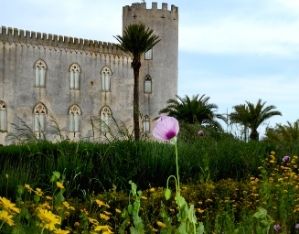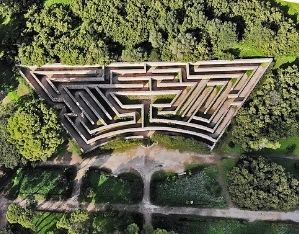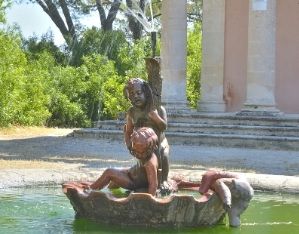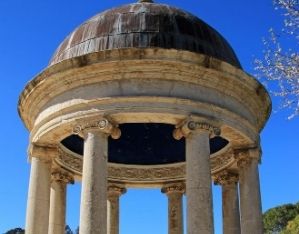Situated 20 km from Ragusa, this park is one of the most beautiful historical gardens in Sicily. Created between the 19th and 20th centuries, it is conceived as a collection of references of different past garden styles in keeping with the taste for revival typical of that period.
The final layout of the park of Castello di Donnafugata was commissioned by Baron Corrado Arezzo de Spuches at the beginning of the 20th century. Restored in 2005 it has now regained its original splendour. Surrounded by walls, it is crossed by straight paths that connect the various monumental features and by a network of secondary irregular paths. The decors include a remarkable Neoclassic kaffeehaus, a small circular temple with a sky-painted dome and artificial grottos with cork stalactites, a chapel, an artificial lake with a cistern, a magnificent stone maze,and two cypress-tree exedras with cenotaphs that recall Rousseau’s 18th-century tomb on the Isle of Poplar Trees in Ermenonville. The park comprises three areas: the horticultural area with citrus and fruit trees, greenhouses and a small botanical garden with exotic species; the “formal” garden adjacent to the Castello di Donnafugata building, landscaped by Gaetan Combes de Lestrade, with lavender and rosemary flowerbeds; and lastly the “informal” garden. The tree layout is extremely refined and originally included more than 1500 plant species. Today only about a hundred remain among which there are four examples of over one-century-old Ficus macrophylla, two Pinus roxburghii, and one orange wood Sideroxylon foetidissimum; also part of the park are a Ficus magnolioides and bengalensis, Casuarina verticillata, Rhus tripartite and viminalis, maritime pines and palm trees.





